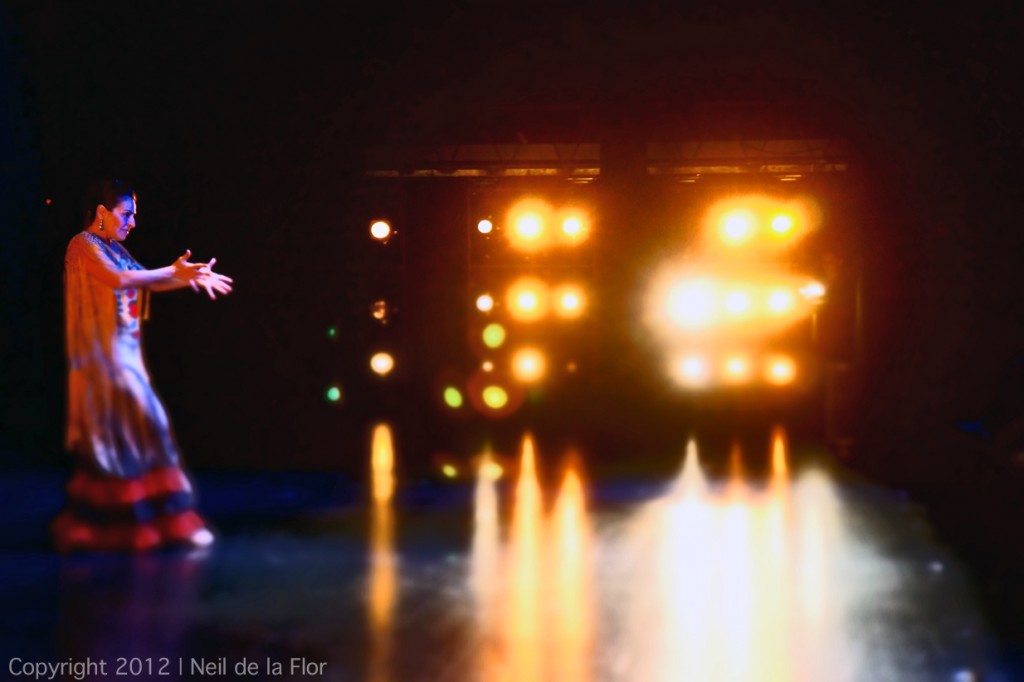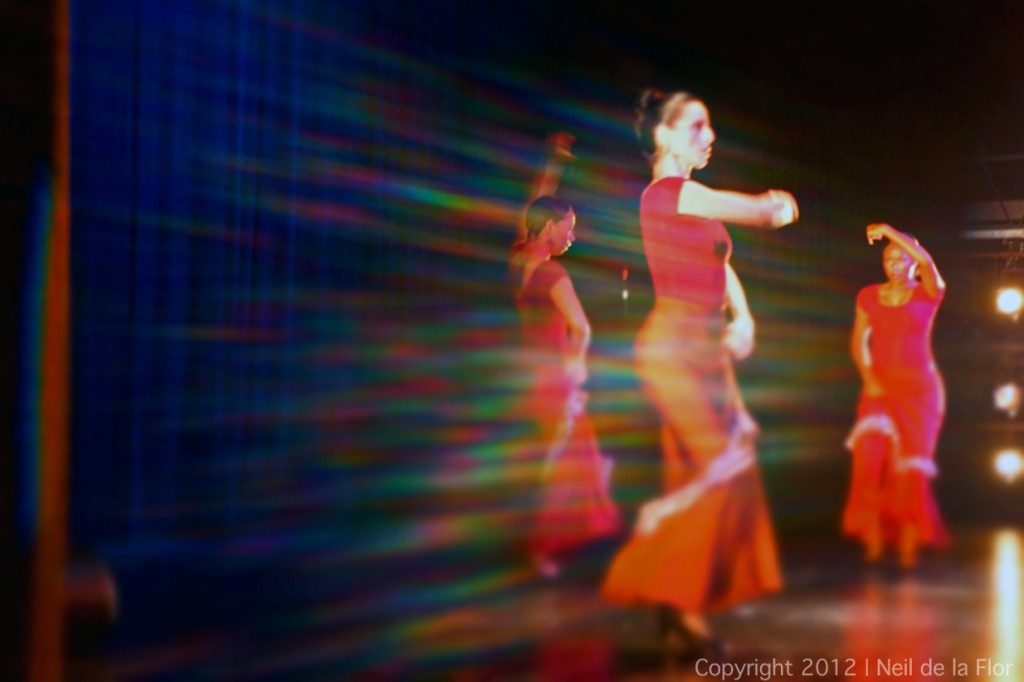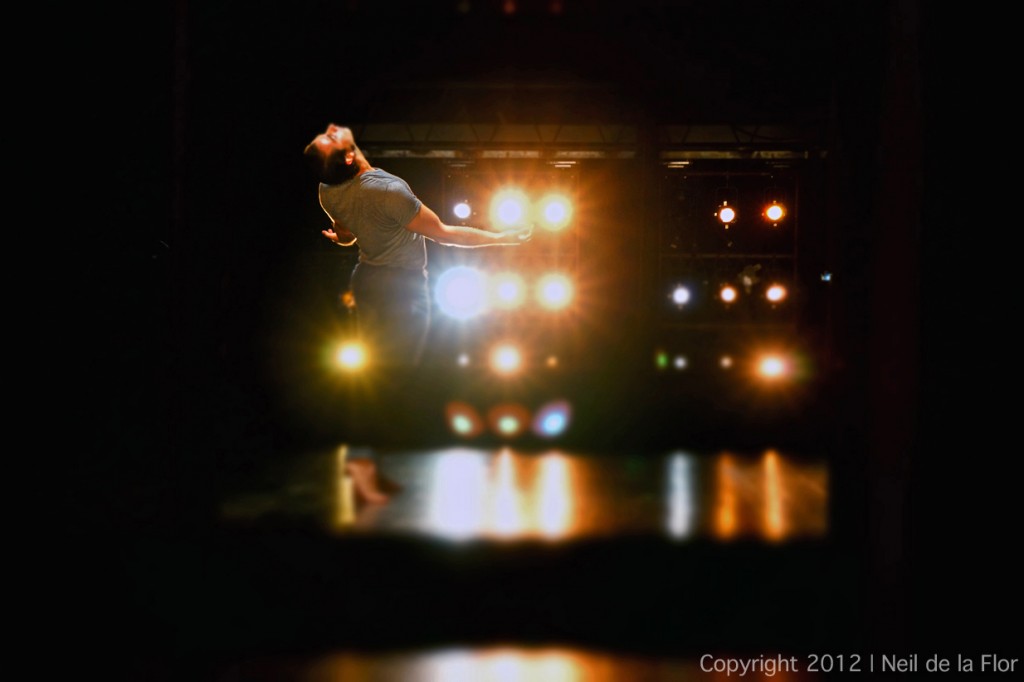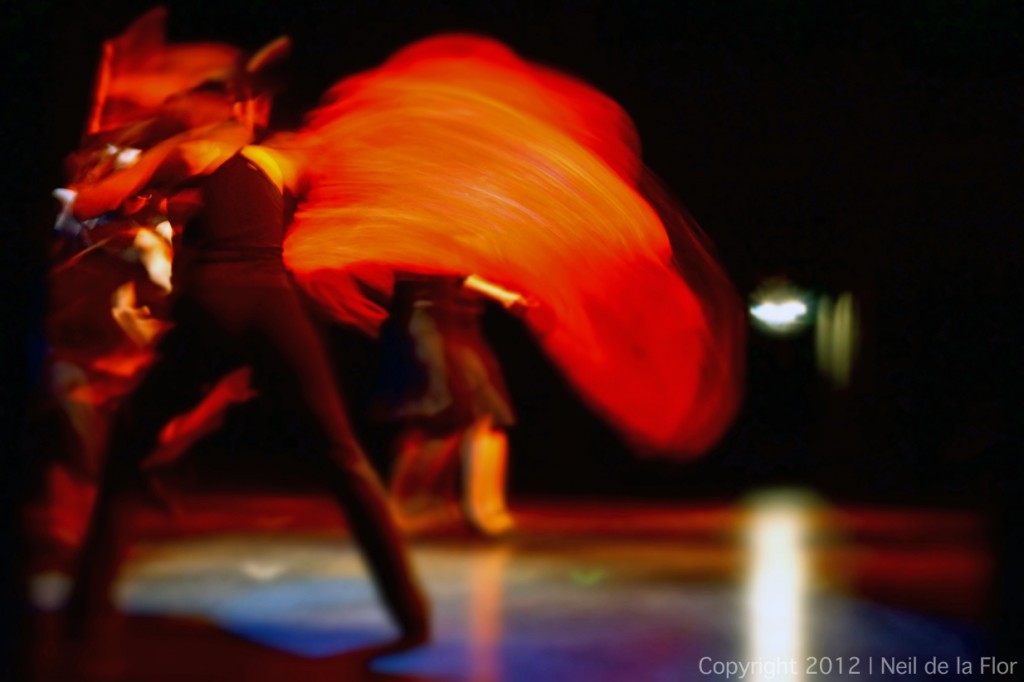
Moving images at “Soulé”
Last week we told you about “Soulé,” a one-night performance that extended traditional flamenco into a contemporary dance context. The presentation, which took place Friday, didn’t necessarily persuade everyone in attendance. But what “Soulé” lacked in energy and connection with the audience, the dancers made up for in grace and beauty as they illuminated the stage with their bodies in motion.
Artistic Director Ana Miranda took a huge risk combining traditional flamenco with contemporary dance, live rhythm & blues and spoken word. The fusion irked some ardent flamenco traditionalists in the audience who,unfortunately, made their voices heard during the performance. But the dancers pushed ahead as Miranda pushed the expected boundaries and opted to create a new experience for a new kind of audience.
“Soulé.” Photo by Neil de la Flor
I experienced Soulé from the side, which gave me a unique perspective. From my vantage point, the lighting became another character — an integral part of the choreography — that the dancers moved with and in between. Unfortunately, the audience couldn’t see the dance unfold as I did.
“Nature Boy,” a segment of the performance choreographed by Miranda and Pioneer Winter, stole the show. Sometimes we reach for the dark from the light. Sometimes we don’t know why even when we’re on tippy toes. And sometimes even the dark is too bright. These are the lines that shot into my mind as Winter became the light in the dark — stunning and iridescent — as he executed a contemporary ballet between light and no light.
Pioneer Winter in “Soulé.” Photo by Neil de la Flor
Another stunning segment was “Passion Play” with Ana Miranda, Ana Bolt and Barny Espinal. The dancers used a giant red shawl, a chair and their luminous bodies in a passionate play between color and movement.
“Soulé.” Photo by Neil de la Flor
However, the second half Soulé, inspired by the survival of New Orleans after Hurricane Katrina, split the performance in two. The jolt was too extreme. The thread — flamenco — wasn’t enough to create the illusion of continuity. Fun, yes, but a little too disjointed. This is what made Soulé interesting and risky. Miranda tried and succeeded in evolving an art form — actually, multiple art forms — into a new experience.
Perfect, no. But who cares? Miranda created moving images that I will never forget.
Recent Content
-
Artsarticle ·
-
Artsarticle ·
-
Artsarticle ·




